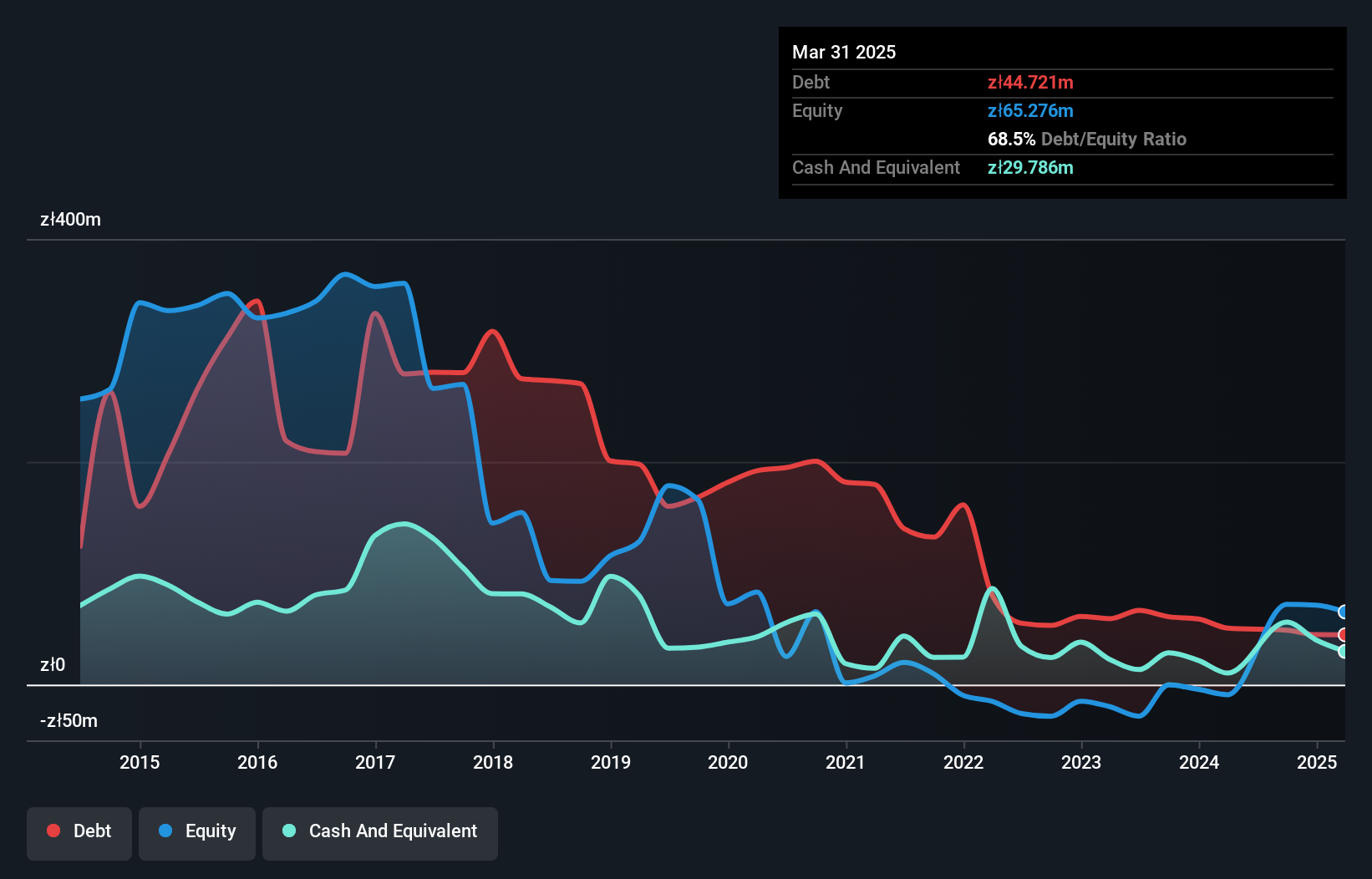Some say volatility, rather than debt, is the best way to think about risk as an investor, but Warren Buffett famously said that 'Volatility is far from synonymous with risk.' It's only natural to consider a company's balance sheet when you examine how risky it is, since debt is often involved when a business collapses. Importantly, Gi Group Poland S.A. (WSE:GIG) does carry debt. But the real question is whether this debt is making the company risky.
Why Does Debt Bring Risk?
Debt and other liabilities become risky for a business when it cannot easily fulfill those obligations, either with free cash flow or by raising capital at an attractive price. In the worst case scenario, a company can go bankrupt if it cannot pay its creditors. While that is not too common, we often do see indebted companies permanently diluting shareholders because lenders force them to raise capital at a distressed price. Having said that, the most common situation is where a company manages its debt reasonably well - and to its own advantage. The first thing to do when considering how much debt a business uses is to look at its cash and debt together.
How Much Debt Does Gi Group Poland Carry?
The image below, which you can click on for greater detail, shows that Gi Group Poland had debt of zł44.7m at the end of March 2025, a reduction from zł50.7m over a year. However, it also had zł29.8m in cash, and so its net debt is zł14.9m.

How Strong Is Gi Group Poland's Balance Sheet?
Zooming in on the latest balance sheet data, we can see that Gi Group Poland had liabilities of zł125.4m due within 12 months and liabilities of zł7.67m due beyond that. On the other hand, it had cash of zł29.8m and zł100.8m worth of receivables due within a year. So its total liabilities are just about perfectly matched by its shorter-term, liquid assets.
This state of affairs indicates that Gi Group Poland's balance sheet looks quite solid, as its total liabilities are just about equal to its liquid assets. So it's very unlikely that the zł424.6m company is short on cash, but still worth keeping an eye on the balance sheet.
See our latest analysis for Gi Group Poland
We use two main ratios to inform us about debt levels relative to earnings. The first is net debt divided by earnings before interest, tax, depreciation, and amortization (EBITDA), while the second is how many times its earnings before interest and tax (EBIT) covers its interest expense (or its interest cover, for short). This way, we consider both the absolute quantum of the debt, as well as the interest rates paid on it.
Even though Gi Group Poland's debt is only 2.2, its interest cover is really very low at 0.57. The main reason for this is that it has such high depreciation and amortisation. While companies often boast that these charges are non-cash, most such businesses will therefore require ongoing investment (that is not expensed.) In any case, it's safe to say the company has meaningful debt. Notably, Gi Group Poland made a loss at the EBIT level, last year, but improved that to positive EBIT of zł2.5m in the last twelve months. The balance sheet is clearly the area to focus on when you are analysing debt. But you can't view debt in total isolation; since Gi Group Poland will need earnings to service that debt. So if you're keen to discover more about its earnings, it might be worth checking out this graph of its long term earnings trend.
Finally, a business needs free cash flow to pay off debt; accounting profits just don't cut it. So it is important to check how much of its earnings before interest and tax (EBIT) converts to actual free cash flow. During the last year, Gi Group Poland burned a lot of cash. While that may be a result of expenditure for growth, it does make the debt far more risky.

Our View
Both Gi Group Poland's conversion of EBIT to free cash flow and its interest cover were discouraging. But its not so bad at staying on top of its total liabilities. When we consider all the factors discussed, it seems to us that Gi Group Poland is taking some risks with its use of debt. While that debt can boost returns, we think the company has enough leverage now. There's no doubt that we learn most about debt from the balance sheet. However, not all investment risk resides within the balance sheet - far from it. Case in point: We've spotted 3 warning signs for Gi Group Poland you should be aware of, and 2 of them make us uncomfortable.
If you're interested in investing in businesses that can grow profits without the burden of debt, then check out this free list of growing businesses that have net cash on the balance sheet.
New: Manage All Your Stock Portfolios in One Place
We've created the ultimate portfolio companion for stock investors, and it's free.
• Connect an unlimited number of Portfolios and see your total in one currency
• Be alerted to new Warning Signs or Risks via email or mobile
• Track the Fair Value of your stocks
Have feedback on this article? Concerned about the content? Get in touch with us directly. Alternatively, email editorial-team (at) simplywallst.com.
This article by Simply Wall St is general in nature. We provide commentary based on historical data and analyst forecasts only using an unbiased methodology and our articles are not intended to be financial advice. It does not constitute a recommendation to buy or sell any stock, and does not take account of your objectives, or your financial situation. We aim to bring you long-term focused analysis driven by fundamental data. Note that our analysis may not factor in the latest price-sensitive company announcements or qualitative material. Simply Wall St has no position in any stocks mentioned.
About WSE:GIG
Gi Group Poland
Operates as a human resources company in Poland and internationally.
Adequate balance sheet with low risk.
Market Insights
Community Narratives




